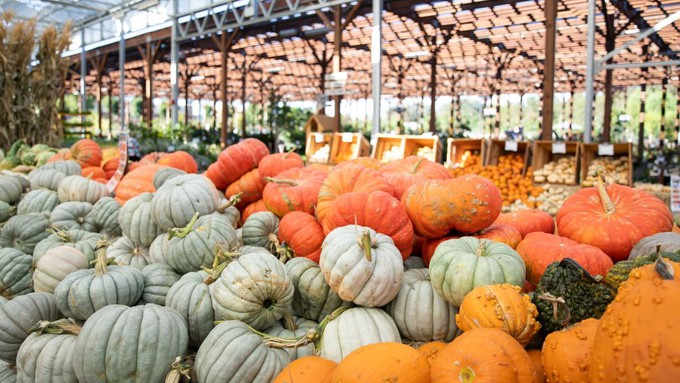
Find free family fun, gardening inspiration and plenty of pumpkins

Hundreds of pumpkins await visitors to Green Acres at Eisley's Nursery in Auburn. Photo courtesy of Green Acres Nursery & Supply www.idiggreenacres.com
The pumpkins have arrived! And so have fall celebrations.
Green Acres Nursery & Supply will embrace the autumn spirit with its annual Fall Festival, set for Saturday, Sept. 24.
To be held from 8 a.m. to 4 p.m at Green Acres’ Eisley Nursery in Auburn, the Fall Festival features a huge selection of pumpkins plus fall planting ideas, live music, face painting, scavenger hunt, petting zoo, pie walk and other fun things for the whole family.
Learn how to make a succulent centerpiece planted in a pumpkin. Snack on fresh-popped popcorn. In addition, seasonal drinks and treats will be offered for sale.
Get plenty of garden advice and inspiration. On hand will be representatives from Auburn Golden Gardeners Garden Club, Auburn Garden Club and Placer Nature Center. Free demonstrations include a composting workshop. Get your pruners, lopers and other tools sharpened.
Admission is free. Green Acres’ Eisley Nursery is located at 380 Nevada St. In Auburn.
Details and directions: www.idiggreenacres.com.
Comments
0 comments have been posted.Sacramento Digs Gardening to your inbox.
Sites We Like
Garden Checklist for week of May 5
Survey your garden after the May 4 rainstorm. Heavy rain and gusty winds can break the neck of large flowers such as roses. Also:
* Keep an eye on new transplants or seedlings; they could take a pounding from the rain.
* Watch out for powdery mildew. Warmth following moist conditions can cause this fungal disease to “bloom,” too. If you see a leaf that looks like it’s dusted with powdered sugar, snip it off.
* After the storm, start setting out tomato transplants, but wait on the peppers and eggplants (they want warmer nights). Pinch off any flowers on new transplants to make them concentrate on establishing roots instead of setting premature fruit.
* Trim dead flowers but not leaves from spring-flowering bulbs such as daffodils and tulips. Those leaves gather energy to create next year's flowers. Also, give the bulbs a fertilizer boost after bloom.
* Pinch chrysanthemums back to 12 inches for fall flowers. Cut old stems to the ground.
* Mulch around plants to conserve moisture and control weeds.
* From seed, plant beans, beets, cantaloupes, carrots, corn, cucumbers, melons, pumpkins, radishes and squash.
* Plant onion sets.
* In the flower garden, plant seeds for asters, cosmos, celosia, marigolds, salvia, sunflowers and zinnias. Transplant petunias, zinnias, geraniums and other summer bloomers.
* Plant perennials and dahlia tubers for summer bloom.
* Don’t wait; plant summer bulbs, such as gladiolus and tuberous begonias.
* Harvest cabbage, lettuce, peas and green onions.